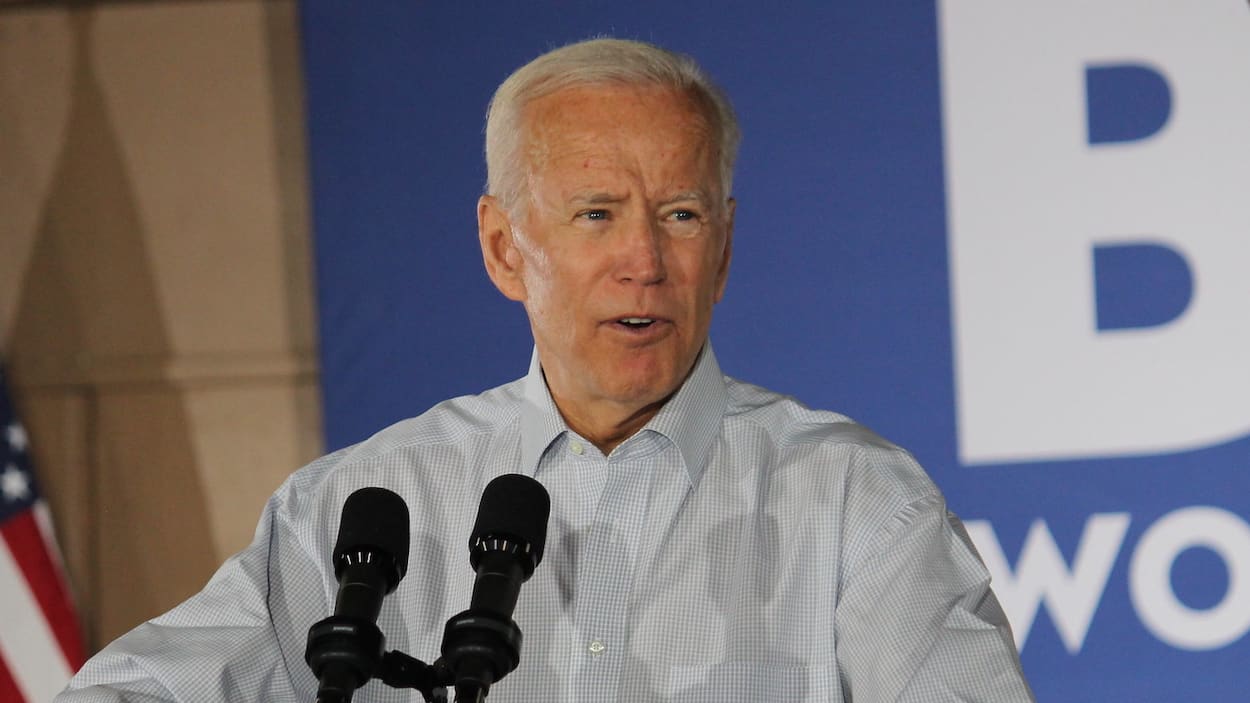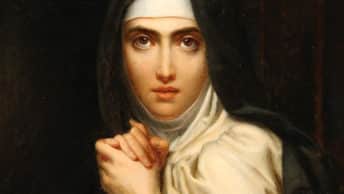Two unseemly connected fields have long played a major role in my life outside of my family home. I have been a baseball fan since 1952. I have been writing and even teaching about baseball for just under a half century. I have been active in the Pro-Life Movement since I saw my first fetal feet pin after Sunday Mass in 1986. I have also been writing, protesting and talking about that issue ever since.
What do my two avocations have in common? On the surface not much, save for the word seam. Every baseball has two seams although some pitchers throw a four-seam fastball. Most garments have several seams, except for whole cloth, which is seamless.
Shortly after I began my pro-life apostolate, I seized on the opportunity to meld the two into one. Someone in the Archdiocesan Office Pro-Life Office was stricken with the unique idea of holding a pro-life variety show. This possibility immediately congered vintage images of Mickey Rooney and Judy Garland playfully gamboling in a barn somewhere outside of Kansas.
Unfortunately, I had not any identifiable talent that could lend itself to such a show. I had proven that at a Talent Night Show on a cruise ship in 1984 with my lame attempt at comedy before 350 people. I do have a vivid imagination and an inner skill of seeing unique connections in things that seemingly had no common ground. I decided to blend my exceptional Baseball knowledge with my newly-minted advocacy for the Right to Life for the Unborn.
At the audition I offered to do a comparison of how the game of baseball was a lot like being pro-life. By the time my turn came, I had listened to seven or eight singers, a few dancers, one of whom might have been a flamingo dancer or that could a bad memory from the cruise. My script was probably under four minutes in duration.
To consummate a pregnancy, a family needs a pitcher, the husband and a catcher, in this case a wife. The number nine reigns in both activities. There are nine players on a baseball team. To procreate a new player, it usually takes nine months, while in baseball there are nine innings in a game, unless it goes into extra innings as my late wife’s first baby did. With Mark, the game went into its 11th month. A family member, such as a mother or a mother-in-law could be someone like Ernie Banks of the Cubs who often said let’s play two… and have twins.
That idea of twins does summon a negative aspect of my pregnancy analogy. Innocent life has many opponents who try to shorten or prevent a baby from being born, such as Life’s deadly rivals, the Planned Parenthood Bullies. Their best friend is the double play or in the parlance of both baseball and pro-life, is called twin killings. The rest of my piece, I devoted to reading from a copy of the birth announcement I had written for my last born child, my son Matthew in 1976. I said that The Borston Braves had signed a new member that would soon debut in the Pampers League. I listed his height and weight as 1’11 and over nine pounds. He had already played the fetal position but was ready to play in the Big Show when he learned to walk and strike-out.
After I had finished, I had no idea what they had thought of my act, until the group of maybe 16-17 people, started to accompany the piano player in unison, in a splendid rendition of Take me out to the ball game. I think I was blushing or maybe even tearing as I left the stage. Sadly to say the Variety Show never made it out the try-outs.
To segue from baseball to the many ideas that have been floating around in the unsettled waters of the pro-life movement, I want to focus on the Seamless Garment, which has arguably done more to undermine the traditional beliefs of countless thousands of committed life activists. In recent months, it has been widely debated in social media, especially on Twitter.
Believers in the Seamless Garment say it is basically common sense Catholic Social Teaching. They say it puts the human person at the center of things, instead of things such as possessions and ideologies. It insists that the Church’s teaching is a unity, analogous to the garment that Jesus wore to His crucifixion.
It was a Catholic pacifist, Eileen Egan, who coined the phrase in 1971 to describe a holistic reverence for life., The phrase is a reference from John 19:23 to the seamless robe of Jesus, which his executioners did not tear apart. The protection of life, said Egan, is a seamless garment. You can’t protect some life and not others. They believe all Catholics are bound to it is by sacred tradition to the proposition that all human beings, without any exception whatsoever, are made in the image and likeness of God and that Jesus Christ died for all human beings, without any exception whatsoever. Therefore each human person—without any exception whatsoever—is sacred and is the only creature that God wills for its own sake. Does not this manufactured statement equate a Mother Teresa with an Adolph Hitler? Certainly something changed over the course of their respective lives.
Egan’s beliefs were meant to challenge those members of the anti-abortion movement who were in favor of capital punishment. I believe it was her devout pacifism, and not Church teachings or the Bible that was the true inspiration for her garment. Her theory is laden with a New Age idealism that like her pacificism, self-detaches from reality.
The Seamless Garment Theory was first popularized in 1983 by Catholic Cardinal Joseph Bernardin during his address at Fordham University, in December of 1983. He based his thinking on the premise that all human life is sacred and should be protected by law. He advanced the notion that Catholic politicians should not be judged solely, or even primarily, by their respective positions on abortion. The Cardinal stressed that there were other life issues that warranted a proper Catholic response. Abortion was merely one strand in a rich and finely woven ‘seamless garment’ of Catholic social teachings in defense of life. Though only a theory, his Garment has, like similar theories on Evolution and Climate Change, achieved a dogmatic respect over the course of many years that has captured the popular imagination in many circles.
The Cardinal’s address at Fordham University in late 1983, explicitly linked several life issues under a more comprehensive respect life rubric. According to Bernardin If…the right of every fetus to be born should be protected by civil law and supported by civil consensus, then our moral, political, and economic responsibilities do not stop at the moment of birth. Those who defend the right to life of the weakest among us must be equally visible in support of the quality of life of the powerless among us: the old and the young, the hungry and homeless, the undocumented immigrant and the unemployed worker. Such…translates into specific political and economic positions on tax policy, employment generation, welfare policy, nutrition and feeding programs, and health care…
The Seamless Garment was promoted, at least on the surface, as a symbol of a unity, designed to demonstrate the Church’s deep concern for all human life, from the moment of conception to natural death. In the real world, it has done nothing of the sort. To the contrary, it caused nothing but friction, conflict and even despair among Catholic believers. Its motto lacks the word innocent, which literally allows its acolytes to condemn abortion and capital punishment in the same breath.
Cardinal Bernardin’s perception of the morality of the Life Movement is supported by what has been called the Philosophy of Feelings. While both Faith and Reason are important, according to the Cardinal its overriding characteristic was what he called attitudes or atmosphere in society. While innocent life may never be taken…attitude is the place to root an ethic of life. Attitude, or perhaps society’s Conventual Wisdom, is usually secular and political in nature. As a result it easily lends itself to a moral relativism that levels the playing field to the common denominator of subjective feelings, which are whimsical and ephemeral by nature. This is a feeble foundation for any ethic, and as Pope Benedict XVI warned us years ago, it can easily lead to a dictatorship of relativism.
Only three months after his Fordham address, Cardinal Bernardin attempted to clarify the moral chaos his Fordham speech had caused. Many Catholics agreed that his theory was from the start pedagogically unsound. Even worse the seamless garment metaphor was confusing to all but his most ardent supporters. A metaphor should make teaching easier to understand and not easier to misunderstand. Crisis Magazine also wrote in 1988 If the garment is seamless, people wondered, then the various issues that are linked are of equal importance—just as a hole in a cloth rends that cloth equally at any point?
To say that the Cardinal’s theory was a Catholic philosophy is to identify it with the teachings of Christ. The metaphor also suggests that those who reject the theory are rending the garment of Christ and hence rejecting Christ’s teaching. Yet this is gravely misleading, since the consistent life ethic, in opposing capital punishment, for example, adopts a view that goes beyond the traditional teaching of the Church, that is, the teaching of Christ. The metaphor also erroneously suggests that Catholics are bound by the Church to oppose capital punishment.
Bernardin’s thinking gained great momentum until the Papacies of Saint John Paul II, and Benedict XVI, who both tightened the reins on it. Even the Cardinal was compelled to footnote his creation before his death in 1996 from pancreatic cancer. Backtracking his early statements he confessed that, while all lives were important, some were more vulnerable such as those lost to abortion, euthanasia and the new phenomenon, Fetal Stem Cell Research. In a word his theory had been fallacious from the beginning. Very few advocates got or read this memo.
By 2011 this distortion of the Pro-life Movement had taken a back seat to the more traditional focus of the most salient life issues. As papal biographer, George Weigel wrote in First Things Magazine… for all their occasional playing with Alinsky fire, the politics of the bishops’ conference during the Bernardin Era were more reflective of a determination to position the Catholic Church as part of a liberal vital center than they were of the politics of the American hard left. Weigel trumpeted the end of a time in which a liberal consensus dominated both the internal life of the Church and the Church’s address to public policy. However Weigel’s victory lap was way too premature.
Pope Francis’ papacy has sought to steer the hierarchy away from traditional teachings, toward a wide-angle lens perception of Catholicism that is not just top-down but also horizontal — focused on dialogue in the church and with the wider world. His views are essentially the same as Cardinal Bernardin’s philosophy of feelings from the early 1980s, They look at the whole picture and not just focus almost exclusively on three or so issues, said Michael Sheehan, the erstwhile Archbishop of Santa Fe, N.M., who had been close friends with Bernardin since the 1970s.
Cardinal Bernardin’s philosophy had again taken hold of the leadership in Church to the extent, it would not surprise me to read of the Catholic Church lending its full support to the violence-prone, Marxist group, Black Lives Matter. Regrettably Pope Francis’ Papacy has produced anything but unity in the Church on pro-life issues. Confusion reigns yet again. Bernardin’s notorious metaphor has served to undermine, contradict, and provide a false moral equivalency that has ruptured and seriously damaged the Church’s historical teachings against abortion. The seamless garment has been effectively used to rip and fray any significant opposition to abortion and euthanasia. It has trivialized the Church’s opposition to these intrinsically evils, by equating them with several other more ambiguous or debatable issues, like the minimum wage, civil rights, the death penalty, and the ever-present, world poverty.
While it is true that in a pluralistic society the Church cannot impose its moral teachings on society as a whole; nevertheless, its bishops have an ecclesiastical responsibility to follow the three-fold job description of their holy office, which is to teach, govern and sanctify their flocks. They have a moral responsibility to demand that the Church’s visible members reflect its teachings in the same breath that they proclaim themselves to be good Catholics. For the bishops to declare that pro-abortion politicians cannot be in the state of grace because of their obstinacy in face of the Church’s teaching and their persistence in scandalizing the rest of the faithful, they are not guilty of excessive vigilance. Or is giving scandal not a sin anymore?
Whether unintentionally or consciously, Cardinal Bernardin’s Garment has shrouded several Catholic politicians, who have been able to hide under its whole cloth for over 30 years. It has permitted culture of death politicians to advocate a variegated list of anti-life programs that have seamingly contradicted the teachings of the Church on the sanctity of innocent life. Many Democrats in the U.S. Senate are pro-abortion. So are presidential candidate Joe Biden and Nancy Pelosi, the twice-Speaker of the House. When equal weight is given to succor for the poor, a raise in the minimum wage or opposition to the death penalty, they all score very high on the Consistent Life Meter. Cynics would also say that the seamless garment had been contrived to shroud Catholic politicians under a protective mantel of ecclesiastical approval. No matter what the case, the relativistic thinking of Cardinal Bernardin, who had enjoyed the respect of the radical social activist, Saul Alinsky, and Barack Obama, has sent traditional advocates of life to the back of the bus once again.








